Video of a U.S. Marine Corps UH-1Y Venom helicopter hovering with its landing skids balanced on the edge of a roof as U.S. Navy SEALs jump out looks right out of a Hollywood blockbuster. The Marines recently released a video and accompanying pictures showing just this as part of what was described as consulate evacuation training.
The training took place on April 5 as part of a larger Marine-led exercise. The full released video footage from the event, seen below, starts with faux militants breaching a mock diplomatic compound within Deuce Village, an urban operations training range overseen by personnel at Marine Corps Air Station (MCAS) Yuma in Arizona.

The armed role players, including individuals on foot and more who arrive in a pickup truck, push inside and begin banging on the shipping containers that make up the structure’s wall.

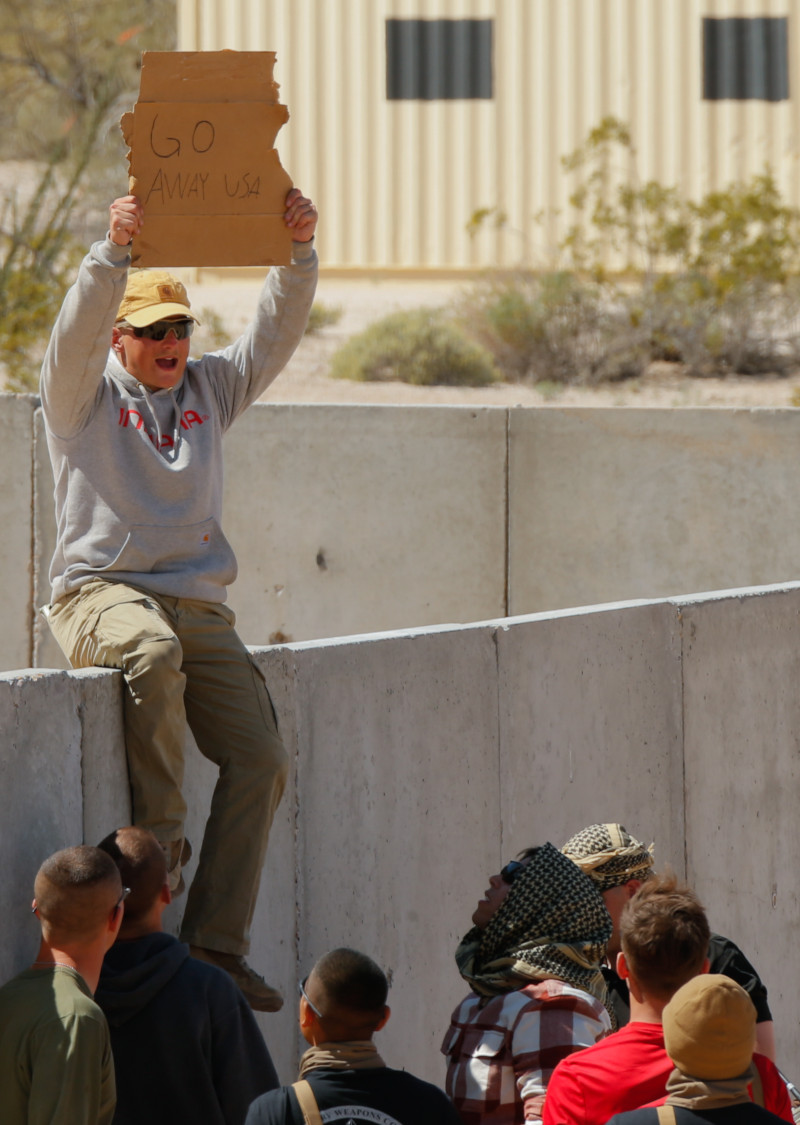
The video then cuts to footage showing a pair of UH-1Y Venoms, two CH-53E Super Stallions, and a Chinook from the Royal Air Force in the United Kingdom, flying into the area. A picture that the Marines separately released from the event shows a total of five CH-53s and a KC-130J Hercules tanker/transport aircraft providing aerial refueling support.

A pair of Super Stallions and the Chinook are seen in the video dropping off Marines outside of the compound, while one of the Venoms inserts SEALs onto the roof. All of the SEALs appear to be armed with M4-pattern rifles with red dot sights, suppressors, aiming lights and lasers, and other accessories, as well as sidearms.
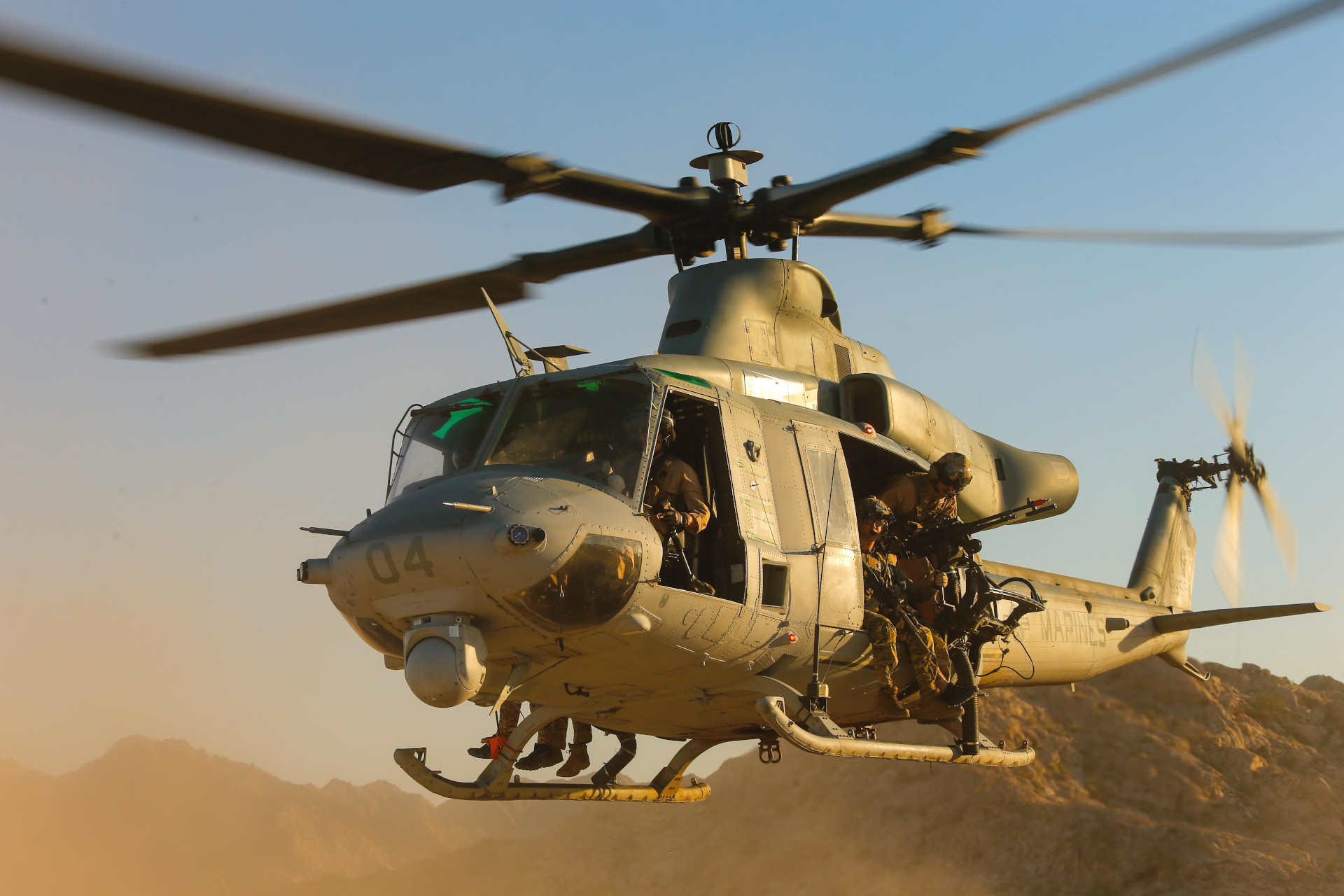
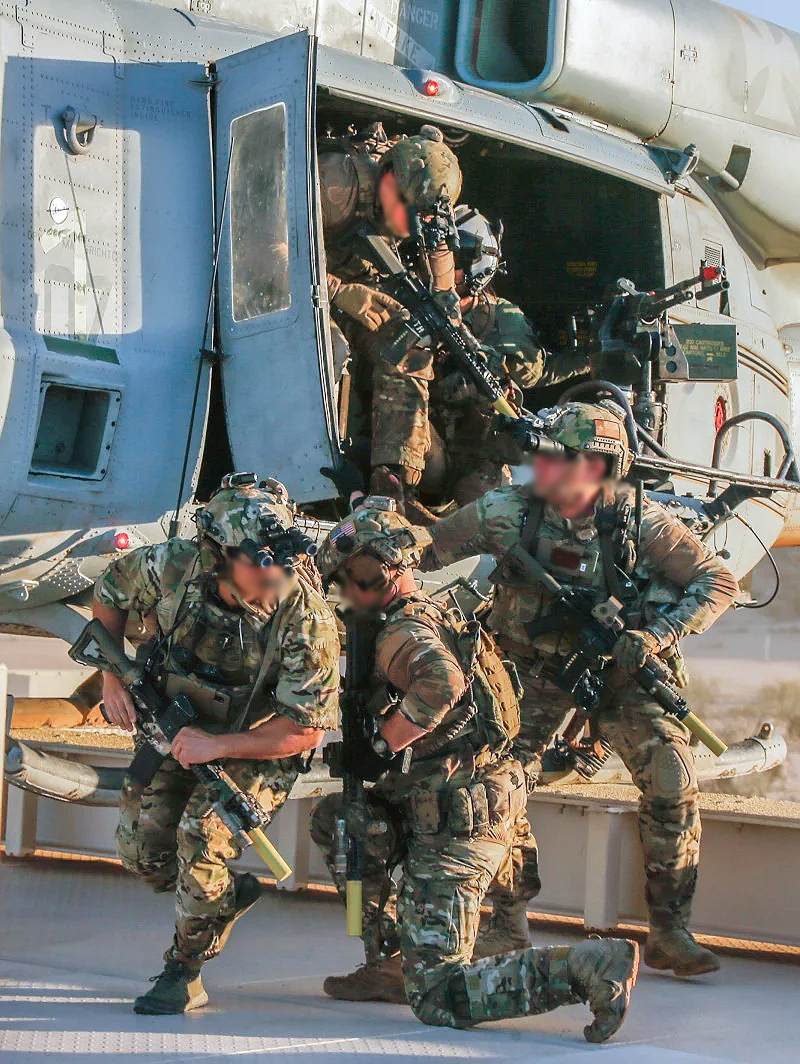
One of the SEALs has a system with multiple antennas sticking out of it on their back, which could be a more robust radio or some other kind of specialized gear. The last one out of the helicopter is also seen carrying two bags containing unknown additional kit.

The other UH-1Y can be seen in the background circling around, likely helping to provide overwatch for forces on the ground. A separate picture from the training exercise shows what appears to be the second Venom carrying an AN/ALQ-231(V)3 Intrepid Tiger II electronic warfare pod. The Intrepid Tiger II pod is primarily designed to jam enemy communications, but can disrupt other kinds of emitters, including systems used to remotely trigger improved explosive devices. It also has secondary airborne directing finding and intelligence-gathering capabilities, allowing it to help locate enemy forces and gather details about their activities. You can read more about all of this here.
In the context of this specific training, Intrepid Tiger could be very useful for preventing militants from coordinating their activities most effectively or attempting to trigger explosive devices, and just otherwise offering additional situational awareness.

The SEALs then push the roleplayers out of the compound from within. No shots are heard or seen fired in the entire video, but at this point in the footage, one of the Naval Special Warfare operators employs a flashbang-type grenade, or a training simulator thereof. Another one can also be seen carrying what appears to be a collapsible stretcher.
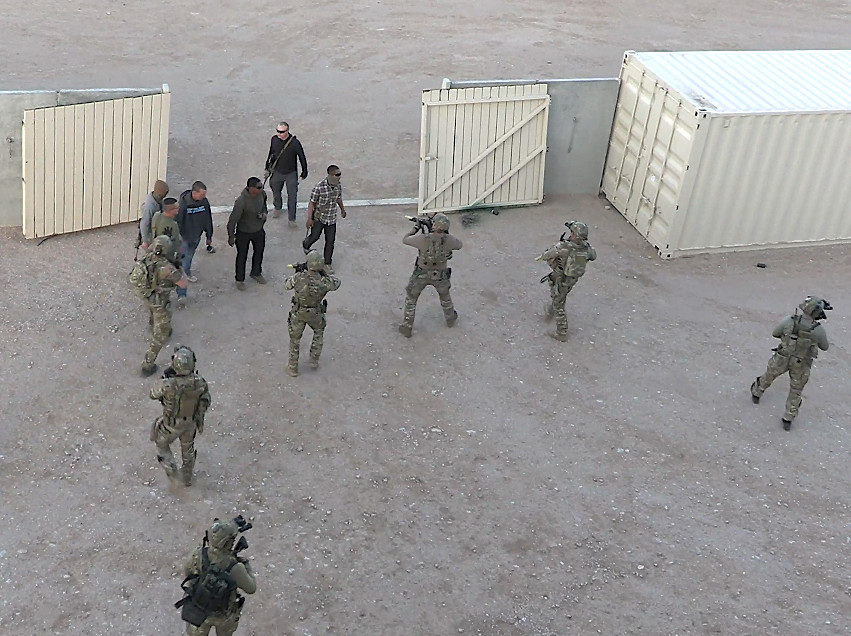
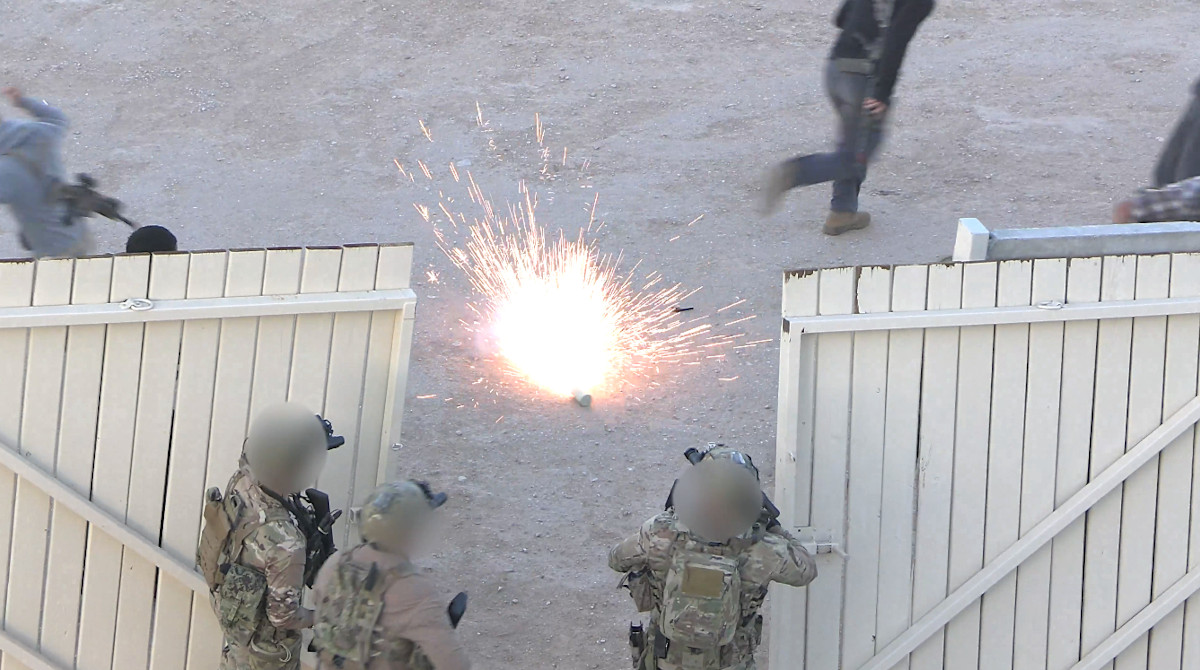
Marines, with the standard array of weapons and other gear, including M4 carbines, M27 Infantry Automatic Rifles, and 84mm Carl Gustaf recoilless rifles, help control the situation from outside.

From the roof, what look to be U.S. State Department Diplomatic Security Service (DSS) personnel in plain clothes watch over the unfolding events. They are also armed with AR-15/M16-type rifles and blue training pistols.

The tail end of the video has footage of the RAF Chinook over Deuce Village as the sun sets, as well as views of a variant of the H-60 helicopter series shot through a night vision optic.

The official caption for the video says that Marines from the 3rd Battalion, 7th Marine Regiment, U.S. Navy SEALs, and DSS personnel were among those who took part in this particular event, which occurred on April 5. A caption for one of the pictures from the consulate evacuation training mentions the RAF Chinook.
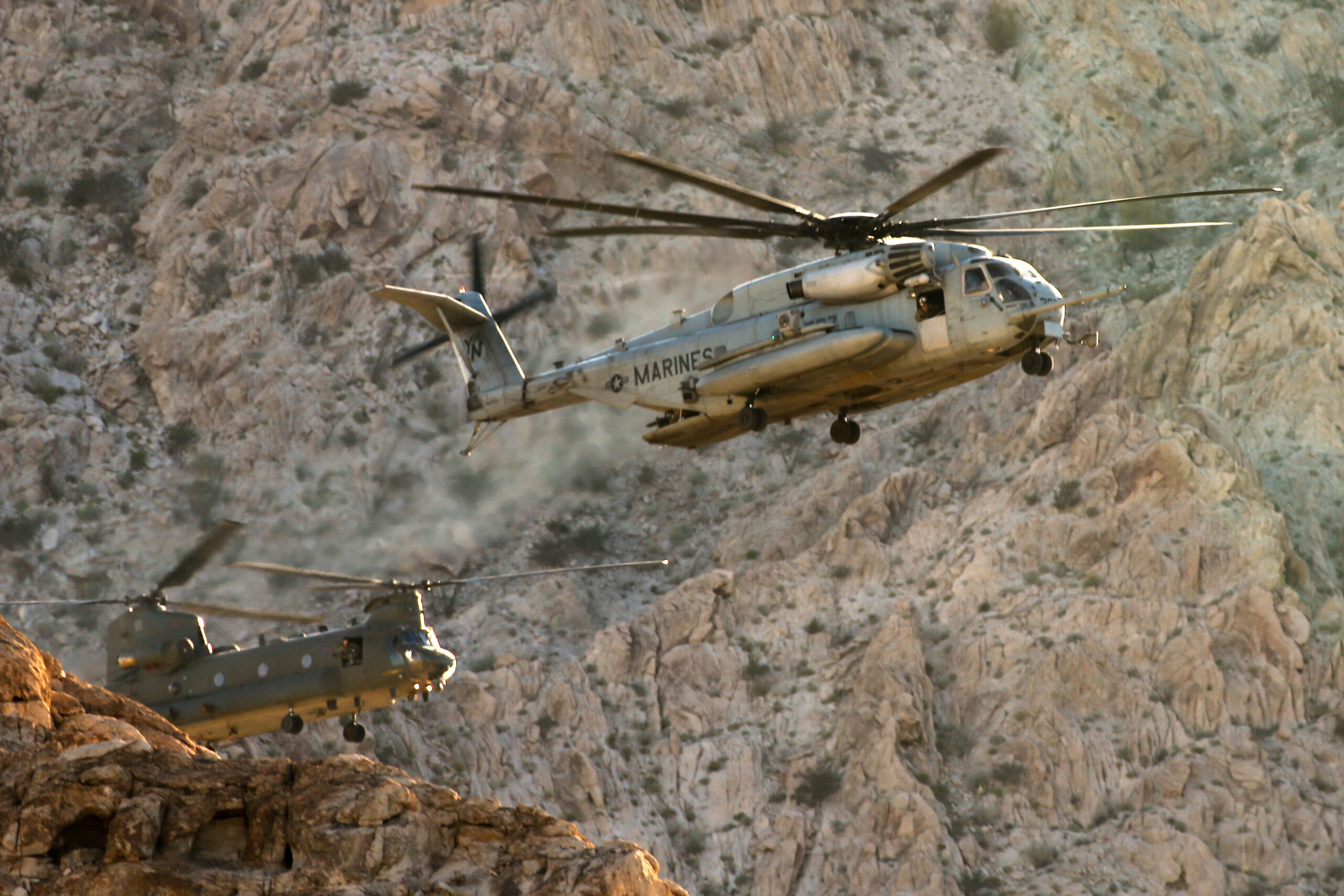
Who the H-60 variant might belong to is not immediately clear. However, its overall configuration, with what may be a sensor turret fitted to the nose, but no aerial refueling probe, could point to it being a U.S. Navy MH-60R or MH-60S. Separate official media for the larger training exercise that this was a part of, called Weapons and Tactics Instructors Course 2-23 (WTI 2-23), shows at least one Navy MH-60S participating.

WTI’s are seven-week long capstone Marine aviation-focused exercises that some have described as the “TOPGUN of the Marines.” Marine Aviation Weapons and Tactics Squadron One (MAWTS-1) hosts one WTI at MCAS Yuma roughly every other quarter of the year. WTIs allow participating aviators to show they have mastered an array of combat aviation tactics, techniques, and procedures. This can include rotary-wing air-to-air combat training, as you can learn more about in this past War Zone feature. Those who complete the course are then tasked with disseminating that knowledge back to their home units.
As evidenced by the recent consulate evacuation training, WTIs regularly include participants from elsewhere within the U.S. military, as well as non-military U.S. government agencies and foreign allies and partners. Contractors often provide additional services, including operating real examples of potential foreign threats, such as Russian-made Hind attack helicopters.
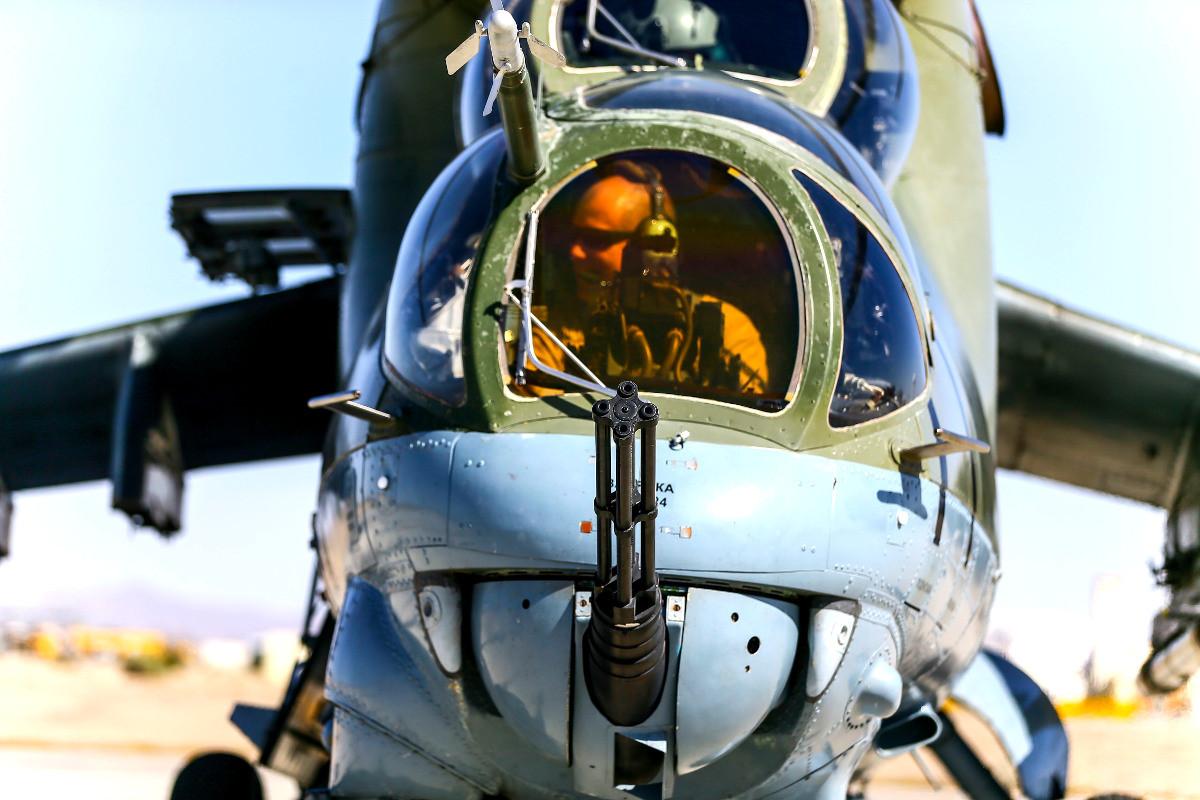
There are immense benefits to these disparate groups being able to train directly together. It provides an opportunity for them to experience firsthand what could be involved in future interagency or coalition operations.
Missions involving the reinforcement or evacuation of diplomatic facilities abroad are, by their nature, certain to be interagency affairs. The kinds of crises that might precipitate these kinds of operations could easily see the involvement of foreign allies and partners, or their presence nearby, and prompt a need or desire for close coordination.
This is not a new mission set for the Marine Corps, broadly, or its aviation communities. However, the U.S. government’s preparedness, or lack thereof, to respond to crises at diplomatic facilities overseas, came under immense scrutiny in the wake of the infamous attack on the American consulate in Benghazi, Libya, in September 2011. After that, the U.S. military, as well as other U.S. government agencies, took various steps to improve their capabilities and capacity to respond to these kinds of incidents.
Since then, there have been multiple opportunities for the U.S. military to flex its muscles in this regard.
In 2019, Marines riding in MV-22 Osprey tilt-rotors were part of a broader U.S. military response to a surge in fighting in Tripoli, Libya. Navy Landing Craft Air Cushion (LCAC) hovercraft were also used to help other U.S. personnel relocate to safety.
Marines, who again arrived in MV-22s, were also notably among those who were deployed to reinforce the American Embassy in Baghdad, Iraq in January 2020 after Iranian-backed militias launched an attack on that facility.

Then, in August 2021, Marines were a major part of the still-controversial effort to evacuate U.S. nationals, at-risk Afghans, and others from Afghanistan’s capital Kabul following the return of the Taliban to power in that country. Thirteen Marines, as well as dozens of Afghans, were killed in the course of that operation in a suicide bomb attack outside of the airport in Kabul that was carried out by ISIS’ faction in the country.
The overall evacuation effort in Kabul also involved other branches of the U.S. military, State Department personnel, a host of foreign military contingents, and a variety of independent actors. This very much underscores the value of including interagency and foreign military components in the consulate evacuation training during WTI 2-23.
Altogether, the need for the Marines, as well as the rest of the U.S. government and its foreign allies and partners, to be able to conduct these kinds of operations is only increasing in importance. As such, the kind of training during WTI 2-23 that saw SEALs jumping dramatically out of a Marine helicopter onto the roof of a mock consulate is an important part of ensuring U.S. forces are ready to respond to potentially very real crises.
Contact the author: joe@thedrive.com

